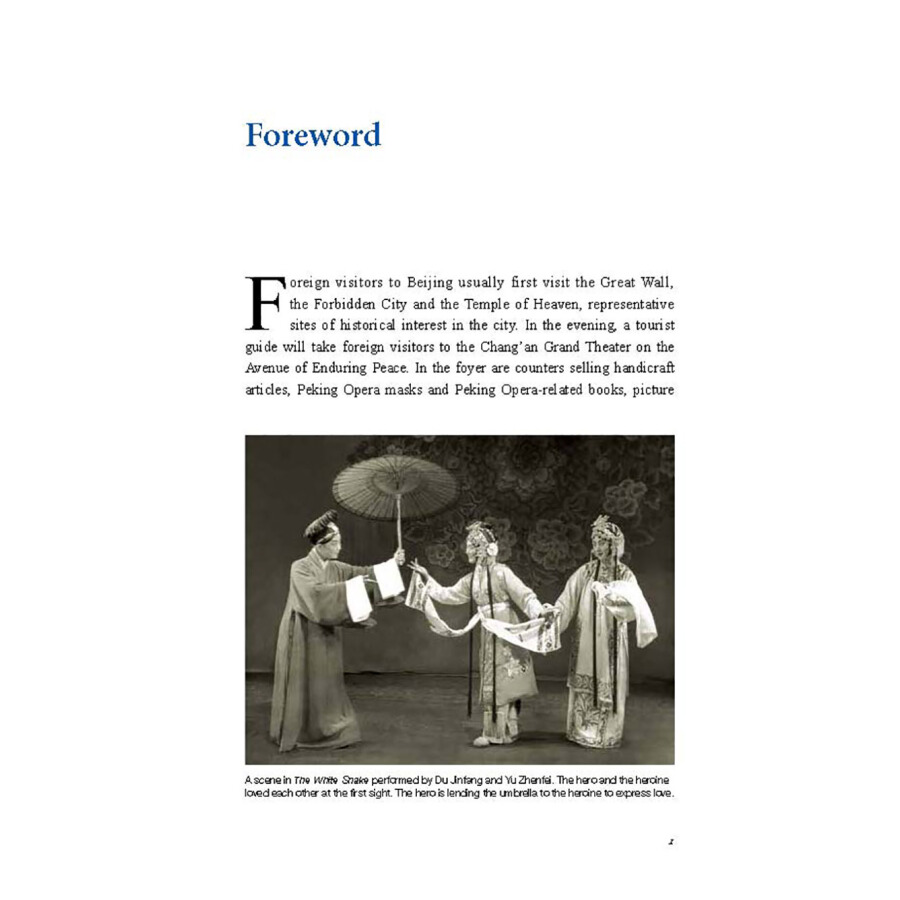Details
Seeing a Peking Opera performance for the first time, a foreigner would wonder: why are faces of actors painted red, white, black, yellow or green? Are they masks? But masks are separate from the face. Facial make-ups in Peking Opera are different from masks. Intrigued, many foreign tourists would go backstage to see actors and actresses remove stage makeup and costume. Next time, they would go there before a performance starts to see how performers do their makeup. Luciano Pararotti, the great tenor of international fame, once had a Peking Opera actor paint on his face the makeup of Xiang Yu, a valiant ancient warrior portrayed in numerous Peking Opera plays.
About Author
Xu Chengbei, researcher in Chinese Art Academy, Member of Chinese Writer’s Association. The peking opera play Wu Zetian that he wrote for the well-know contemporary opera actress Li Shji won the 1st Wen Hua Award. Profound research in the field of Peking Opera Culture and Beijing city culture. He has published more than 60 works including: Peking Opera and Chinese Culture, Old Beijing Trilogy, Mei Lanfang Trilogy, Old Well-known Brands.
Sample Pages Preview



Foreign visitors to Beijing usually first visit the Great Wall, the Forbidden City and the Temple of Heaven, representative sites of historical interest in the city. In the evening, a tourist guide will take foreign visitors to the Chang’an Grand Theater on the Avenue of Enduring Peace. In the foyer are counters selling handicraft articles, Peking Opera masks and Peking Opera-related books, picture albums and audio-video products. Inside the theater, the stage is of a Western style ; seats in the middle and rear rows are soft sofas; but in the front rows are exquisite Chinese-style square tables and armchairs. The traditional seats lend the theater a classical flavor. Sitting in your seat, you might take a look at the Chinese fans around you. They all have a relaxed expression and wear ordinary clothes. Many of them are speaking in each other’s ears. But as soon as the gong and drum strike up, they all calm down and watch the play intently. As the plot enfolds , they seem to know who should be the next to come onto the stage and when to applaud a particular actor or actress for his or her performance. More surprising, aside from applause, Chinese audiences show their appreciation for the performance of actors and actresses by shouting “hao!” It turns out that this means simply “well-done” or “bravo.” n
For first-time foreign viewers, Peking Opera is hard to understand. As a matter of fact, even contemporary Chinese feel more or less unfamiliar with Peking Opera. But as long as you are willing to explore for and understand the artistic characteristics and cultural connotations of Peking Opera, you will find that everything about Peking Opera is so interesting. One morning, you might find yourself in deep love with Peking Opera when you hear singing from Peking Opera fans. n
Peking Opera came into existence in a not too distant past, but it is full of mystery for Westerners. Peking Opera rooted in Chinese culture is quite different from Western drama. You would have a different impression from the one you get from the modern Chang’an Grand Theater if you see a Peking Opera performance in the Hunan-Guangdong Guildhall at 3 Hufang Road or in Zhengyici Guildhall at 220 Xiheyan Street. For foreign tourists, these two old-style theaters are showcases of folkways in old Beijing. Watching a Peking Opera performance in one of these traditional architectures with old-style interior decorations, you seem to be in the midst of a bygone era.


